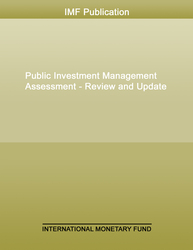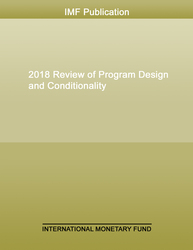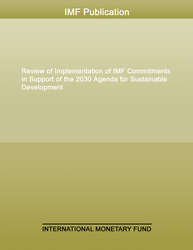
Public Investment Management Assessment - Review and Update
Public Investment Management Assessments (PIMAs) are the IMF‘s key tool for assessing infrastructure governance over the full investment cycle and supporting economic institution building in this area.
46775 The FY 19 budget proposal is formulated against the backdrop of a strengthening global recovery and broadly balanced near term risks.
46776 Somalia: Currency Reform Assessment Letter for the Central Bank of Somalia
46777 The Core Principles for Islamic Finance Regulations and Assessment Methodology
46778 The economic and social imperative for women’s economic empowerment is clear.
46779 China’s Evolving Exchange Rate Regime
46780 Macro-Fiscal Gains from Anti-Corruption Reforms in the Republic of Congo
46781 The Fund’s total net income for FY 2018 is projected at about SDR 0.7 billion, broadly in line with the April 2017 estimate.
46782 Reducing gender gaps can have important economic benefits.
46783 Economic inclusion is the broad sharing of the benefits of, and the opportunities to participate in, economic growth.
46784 This paper reviews the experience with the fiscal space assessment framework that was piloted during 2017–18.
46785 In accordance with Executive Board Decision No.
READ MORE...
Volume/Issue:
Volume 2018
Issue 025
Publication date: May 2018
ISBN: 9781498308441
$5.00
Add to Cart by clicking price of the language and format you'd like to purchase
Available Languages and Formats
| English |
Prices in red indicate formats that are not yet available but are forthcoming.
Topics covered in this book
This title contains information about the following subjects.
Click on a subject if you would like to see other titles with the same subjects.
Public Finance , PP , country authorities , infrastructure governance , investment institution , priority reform , reform priority , section IV , efficiency gap , fund member country , department comment , member country request , investment efficiency , country group , Public Investment Management Assessment (PIMA) , Public investment spending , Public investment and public-private partnerships (PPP) , Budget planning and preparation , Infrastructure , Africa , Middle East and Central Asia , Europe , Western Hemisphere , Asia and Pacific
Also of interest
Summary
Public Investment Management Assessments (PIMAs) are the IMF‘s key tool for assessing infrastructure governance over the full investment cycle and supporting economic institution building in this area. The PIMA framework was first introduced in the 2015 Board Paper on “Making Public Investment More Efficient,” as part of the IMF’s Infrastructure Policy Support Initiative (IPSI). A key motivation for its development has been that strong infrastructure governance is critical for public investment to spur economic growth. PIMAs offer rigorous assessment of infrastructure governance, that is, the key public investment management (PIM) institutions and processes of a country. On the basis of the PIMAs conducted to date, this paper summarizes the lessons learned and updates the assessment framework itself. PIMAs summarize the strengths and weaknesses of country public investment processes, and set out a prioritized and sequenced reform action plan. The PIMA framework has been well-received by member countries, with over 30 PIMAs conducted to date (mainly in emerging markets (EMs) and low income developing countries (LIDCs), and a pipeline of new requests in place; eight PIMAs have been or are about to be published. The PIMAs conducted show that there is much room for strengthening PIM, with weaknesses spread across the investment cycle. The results and recommendations of several PIMAs have been used in IMF lending, surveillance, and capacity development (CD) work, and have improved support and coordination among CD providers. While leaving the structure of the 2015 framework unchanged, the revised PIMA framework highlights some critical governance aspects more prominently. In particular, it brings out more fully some key aspects of maintenance, procurement, independent review of projects, and the enabling environment (e.g., adequacy of the legal framework, information systems, and staff capacity). Yet, the revised PIMA retains the key features of the 2015 framework, including the three-phase structure (planning, allocation, and implementation) with five institutions assigned to each phase, three dimensions under each institution, and three possible scores under each dimension (i.e., not/partially/fully met). The revision has benefitted from extensive stakeholder feedback, including from IMF teams, World Bank staff, and country authorities.
Copyright © 2010 - 2025
Powered by:
AIDC



